Racial Hygiene: The institutionalized killing of “undesirables” in Nazi Germany*. Physicians and midwives were encouraged to enact “mercy killings” if severe birth defects and/or physical or mental disabilities were present in patients. This was known as Operation T-4 and was authorized by Adolf Hitler in 1939. The Holocaust Memorial Museum writes:
From January 1940 to August 1941, more than 70,000 men and women were transported to one of six specially staffed facilities in Germany and Austria and killed by carbon monoxide poisoning in gas chambers disguised as showers. Growing public awareness and unrest over the killings influenced Hitler to halt the gassing program. Euthanasia murders resumed in other guises; patients were killed by means of starvation diets and overdoses of medication in hospitals and mental institutions throughout the country. From 1939 to 1945, an estimated 250,000 persons were killed in the various euthanasia programs.38
*This also included Jews, Roma, and other “subversive” ethnic minority groups.
Book Burning in Berlin: May 10, 1933; The student organization, National Socialist German Students’ Association, gathered and burned at least 25,00 volumes of anti-German books. This followed the student association’s twelve theses - inspired by the one and only Martin Luther -that included “declarations [describing] the fundamentals of a ‘pure’ national language and culture [...] attacked ‘Jewish intellectualism,’ asserted the need to ‘purify’ the German language and literature, and demanded that universities be centers of German nationalism”.39
Authors whose works were burned included Bertolt Brecht (socialist), Karl Marx (communist) Ernest Hemmingway (influence foreign thinking), Thomas Mann (Weimar Republic supporter), Erich Maria Remarque (believed to have betrayed German soldiers in his novel All Quiet on the Western Front), and Helen Keller (disabled, pacifist, encouraged equal rights for women and workers .)
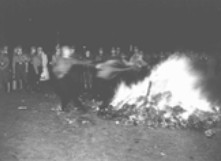

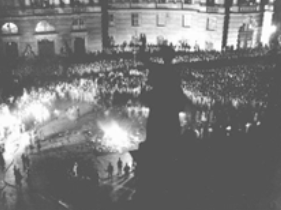
Murder of Ernst Röhm: Röhm was a military officer and higher up in the Nazi Party (and was apparently gay despite holding Hitler’s trust???40). He was assassinated during the Röhm Purge, also known as the Night of the Long Knives and Operation Hummingbird. Hitler called for the murder of the SA - the Nazi paramilitary - leadership. The SA had called for the removal of German elites from Nazi leadership positions. Hitler needed the support of these elites and began to see the SA as a political threat. Göring, Himmler, and Heydrich soon began a way to persuade Hitler to get rid of Röhm specifically. They planted rumors of his plans to seize power and of the bribes he took from France -all of which were false. Despite knowing this, Hitler ordered for the the top SA leaders - including Röhm - to gather at a Bavarian spa. It was here where they were surprised by an immediate arrest and a transport to Stadelheim Prison in Munich. Röhm would be shot in his cell on July 1, 1934 on Hitler’s order.
Assassination of Ernst vom Rath: Ernst vom Rath was an outspoken member of the Nazi Party and a German diplomat. On November 7, 1938, a 17 year old Polish-German Jew named Herschel Grynszpan went to the German embassy in Paris, only to learn of his parents’ deportation from Germany to Poland. He then shot vom Rath five times. The Nazis weaponized vom Rath’s public funeral, claiming that the Jews fired the first shots and declared a war on Germany. His death is often cited as the spark for Kristallnacht.
Kristallnacht: Also known as the Night of Broken Glass. A Nazi-led pogrom against Jews in Germany and newly the occupied territories of Austria, the Sudetenland, and Czechoslovakia. Following vom Rath’s assassination, the Nazis’ Propaganda Minister Joseph Goebbels indicated that “World Jewry” had conspired to commit the murder. He said that any civil unrest was not to be organized, but should it appear it should not be stopped. Violence broke out through Germany and its territories, with SA units and Hitler Youth groups rioting. Synagogues, Jewish cemeteries and businesses, and entire communities were destroyed. This also marked the first instance of a mass arrest of Jewish men. 30,000 men were arrested and transferred to labor and death camps. German officials cited that 91 Jews died that night, but modern scholars believe that the death count could be as high as several hundred, especially when the days and weeks that followed are taken into consideration. There is also a documented rise in rape and suicides following Kristallnacht.


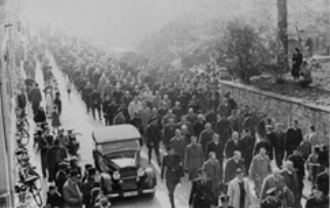
Richard Wagner: German composer known for his operas. Cited to be one of Adolf Hitler’s favorite composers. He was incredibly antisemitic and racist. He is especially known for his essay “Das Judenthum in der Musik” or “Jewishness in Music,” in which he accuses Jews - specifically composers Giacomo Meyerbeer and Felix Mendelssohn - for ruining German culture and holding back the future of German culture.

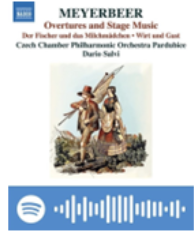
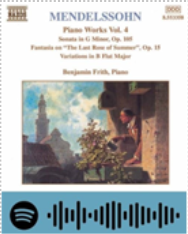
Goethe and Faust: Johann Wolfgang von Goeth was a German playwright who wrote the iconic play Faust. The play - often considered to be the greatest contribution to German literature, is about a successful scholar that grows indifferent and dissatisfied with his life. He then makes a deal with the devil, exchanging his soul for unlimited pleasure and knowledge.
Richard Tauber: Austrian opera singer and film actor with an iconic tenor voice.
Marlene Dietrich: German actress and singer. Super iconic!
Rabbi Hillel Quote: “If I am not for myself, who will be for me? If I am only for myself, what am I? And if not now, when?” (Pirkei Avot 1:14)